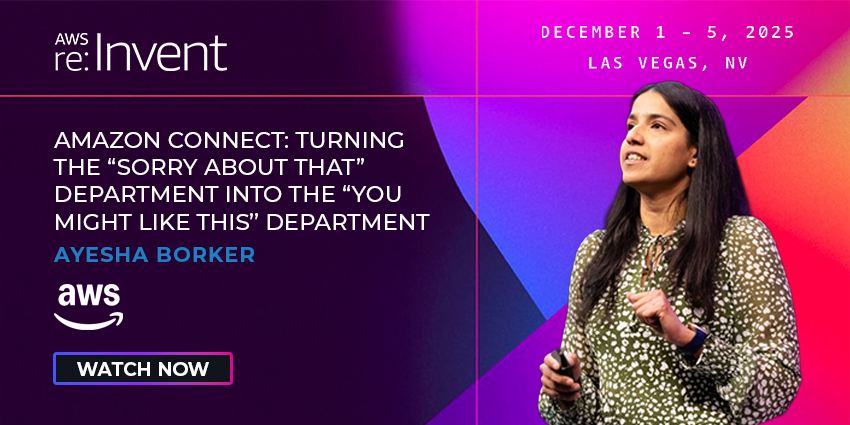What is Conversational AI? The answer depends on who’s asking.
For a support leader, it’s a tool that takes pressure off overwhelmed agents. In the CIO world, it’s a system that connects channels and cuts down on handoffs. For a global enterprise, it’s a way to speak to customers across languages, devices, and time zones.
A few years ago, conversational AI was usually confused with chatbots. The kind that lived in the corner of a website, handling common questions and little else. The technology has changed.
Now the top conversational AI vendors are embedding these solutions into more places: voice assistants that answer complex account queries, text bots that update delivery status in real time, internal agents that help staff reset passwords and troubleshoot issues.
The shift hasn’t been about replacing people. It’s been about giving teams a way to scale the CX work they already do without breaking processes or burying staff under more tickets.
What is Conversational AI?
Conversational AI is a set of technologies that work together to automate human-like communications – via both speech and text – between a person and a machine. They use various tools, large volumes of data, natural language processing, and machine learning to actually interact with people.
At its core, this is software that knows how to listen. It takes what someone says, or types, figures out what they meant, and offers something useful in return. Sometimes that’s a sentence. Other times it’s a solved problem.
Older systems could only follow scripts. Press 1, type this, click that. The newer ones can recognize intent, pull in data, and keep track of what’s already been said.
One conversation might involve a customer checking their refund status. Another might be an internal system helping an employee find a policy document or reset their login.
Both are AI conversations happening all the time.
Conversational AI technology isn’t just about convenience. It’s about speed. Scale. Reducing repetitive work. The systems behind it are getting sharper. Some use large language models. Others lean on custom-built logic flows tied into CRMs, knowledge tools, or ticketing platforms.
There’s no one format. A good system adapts to its job.
How Does Conversational AI Work?
A good conversational AI system feels simple on the surface. But it’s actually a mesh of tools, all working together to keep the conversation moving.
At the core is a process that goes something like this:
First, the system listens , or reads. That’s where natural language processing (NLP and natural language understanding (NLU) kicks in. It looks at the sentence, picks up intent, and tries to figure out what the user wants to do.
- Next comes dialogue management. This part decides what to say back. It tracks context, so the system doesn’t forget what was said two messages ago. It knows when to ask a follow-up. When to switch topics. When to pull in other tools.
- The reply itself is shaped by natural language generation (NLG). Sometimes that’s a prewritten sentence. Sometimes it’s built on the fly by a large language model, tuned to sound more natural than robotic.
- If it’s a voice interface, there’s a translation layer. Speech-to-text (STT) handles the input. Text-to-speech (TTS) delivers the response.
- Behind all of this sits the real power: backend integrations. These connect the AI to systems like CRMs, inventory tools, or ticketing platforms, so it can do more than talk. It can act.
All the while, systems are learning from each interaction, various knowledge sources, and customer data to inform their responses.
The Common Types of Conversational AI
Not all conversational AI is built the same way. Different tools serve different jobs, and what works in one part of the business might not fit another.
Here’s a breakdown of the core types, each used in enterprise environments today:
- Intent-Based Assistants: Use natural language understanding to identify user intent, even with varied phrasing. Common in service desks and messaging apps.
- Hybrid Systems: Blend scripted logic with AI-driven interpretation. They Offer a balance of predictability and flexibility, often preferred in compliance-heavy sectors like finance and healthcare.
- Generative AI Agents: Use large language models to create dynamic, free-form responses. They Can hold nuanced conversations, reference past exchanges, and adjust tone in real time. These agents are Well-suited to open-ended inquiries and customer onboarding.
- Agentic AI bots: Go beyond conversation. These systems take initiative, perform multi-step tasks, and make decisions based on goals rather than just prompts. Think of them as AI coworkers, not just assistants.
Chatbots, Conversational AI, Generative AI, and Agentic AI
There’s been a lot of confusion over what these tools are, and what they’re not.
It’s easy to lump everything a person can interact with under conversational AI, but the systems that drive enterprise automation today don’t all work the same way. Some follow instructions, some improvise, some do both.
- Chatbots: These are the simplest. They follow a set path, usually built around menus, buttons, and keyword triggers. They’re useful for: FAQs, routing, basic tasks.
- Conversational AI: More flexible. These tools understand what someone’s trying to do, even if they don’t say it exactly right. They track what’s been said, keep the thread moving, and pull in real data when needed.
- Generative AI: These systems don’t just follow instructions; they build replies from scratch. Using large language models, they can hold longer exchanges, mirror tone, or explain complex issues in plain language.
- Agentic AI: This one’s different. It doesn’t just respond. It acts. These systems identify tasks, plan the steps, and carry them out, often across multiple tools. Picture an agent that sees an error, checks systems, fixes the issue, notifies the user, and logs the outcome. No prompts.
One way to think of it:
- A chatbot answers
- Conversational AI understands
- Generative AI creates
- Agentic AI finishes the job
Enterprise teams often use a mix. A voice bot might handle login resets with rules, but pass billing to a smarter assistant. That’s normal. What matters is whether the tool fits the job it’s being asked to do.
What is Conversational AI Used for in The Enterprise?
Conversational AI shows up in more places than most people realize. It works behind support portals, inside contact centers, across internal helpdesks, and inside mobile apps. Sometimes it’s helping customers. Sometimes it’s just making internal work less painful.
Here are the use cases that matter most to enterprise teams right now.
Customer-Facing Automation
This is where most deployments start.
- 24/7 Support: Bots handle simple questions, log issues, and push updates across channels, without a person watching the queue.
- Order Tracking & Account Updates: Customers get answers on their own terms. No call holds. No app navigation required.
- Appointment Booking & Changes: AI agents update calendars, trigger confirmations, and sync with backend tools.
- Multilingual Service: One interface, many languages, no need to staff every shift in every time zone.
These use cases reduce volume. But more importantly, they reduce repeat contacts and customer frustration.
Internal Operations & Employee Support
What happens behind the scenes matters just as much.
- IT Helpdesk Bots: Password resets. VPN issues. Account unlocks. These now get handled in seconds, not hours.
- HR Assistants: People can ask about time off, payroll, or benefits, without needing to email or search an intranet.
- Onboarding Support: New hires can get system access, training materials, and policy links, all through one conversation thread.
- Tools for Automation: Bots can handle summarizing, transcribing, and translating text, as well as updating CRM records.
- Agent Assist tools: Conversational AI systems can support team members by surfacing relevant information or suggesting next best actions.
These tools work especially well in distributed teams or hybrid setups, where self-service is critical and response time affects productivity.
Analytics & Intelligence Use Cases
This is where conversational artificial intelligence starts feeding insights into how the business runs.
- Conversational Analytics: AI breaks down chat and voice data into trends, topics, sentiment shifts, resolution times. Teams get real feedback on what’s working and what’s not.
- Business Intelligence: Conversations turn into structured data. That data feeds dashboards. Dashboards inform strategy.
- VOC insights: Companies using VoC programs use conversational AI to understand customer input, and design stronger journey maps.
Using conversational AI and conversational analytics in tandem can help businesses improve customer service, make faster decisions, and even enhance staffing strategies.
Industry-Specific Applications
Different sectors use conversational AI differently, based on volume, regulation, and customer need.
- Retail: Bots recommend products, push offers, handle returns, and deflect support volume, especially during high-traffic periods.
- Finance: Conversational AI handles secure balance checks, transaction queries, fraud alerts, and identity verification.
- Healthcare: Virtual agents support scheduling, symptom screening, and basic post-visit instructions, often integrated with patient portals.
- Logistics: Voice bots assist with delivery updates, route planning, and issue logging hands-free for drivers on the move.
- Telecom: AI helps users troubleshoot outages, change plans, and manage subscriptions, all without reaching a live agent.
Benefits of Conversational AI for Enterprises
For enterprises, the question isn’t just “what is conversational AI” but “Why is it necessary”. Realistically, enterprises aren’t just looking for more tools, they’re searching for ways to solve problems. Conversational AI can do that.
Shorter Waits, Faster Results
Most users aren’t looking for a chat. They’re trying to get something done. With conversational artificial intelligence, answers land fast. Routine tasks like resetting a password or checking an order take seconds. When a person does need to step in, the system hands off the full conversation history.
Around-the-Clock Coverage
Teams can’t be everywhere at once. But AI bots can be. A single instance can support customers across time zones, regions, and languages. This doesn’t just cut pressure on staff. It makes service more accessible without adding shifts or new hires.
Fewer Mistakes, Smoother Journeys
Live agents sometimes give different answers. Or forget a step. Or just misread the tone. AI keeps the conversation consistent every time. That matters in sectors like finance, insurance, and healthcare, where small errors can create big problems.
Better Data, Clearer Decisions
Every conversation tells a story. Smart platforms turn those threads into insight. What people ask. Where they drop off. What frustrates them. Where things could be simpler. That insight feeds into business intelligence, strategy planning, and CX reporting as conversations are happening.
Real Cost Control
Time isn’t the only thing saved. Fewer escalations mean fewer support hours. Fewer repeat contacts mean less volume. Shifting from voice to digital touchpoints means lower cost per interaction without
Challenges and Limitations of Conversational AI
Conversational AI isn’t perfect. The tech has evolved fast, but some pain points still show up, especially at enterprise scale. These are the ones worth planning for.
- Misunderstood Intent: Even strong platforms miss the mark if it sees phrasing it hasn’t seen before or encounters an accent it doesn’t recognize. This is why fallback options matter, and why even the best conversational AI technology needs regular tuning.
- Over-Automation: There’s a fine line between helpful and frustrating. When businesses automate too much, customers hit walls. “Let me talk to someone” becomes a repeated dead end. AI should reduce friction. Not trap people in loops.
- Data Risk: AI conversations create records of what people say, what they ask, and what actions were taken. If not handled properly, those logs can expose sensitive info. Systems need access controls, audit trails, and rules around data retention.
- Cost Beyond the License: Most pricing models cover usage, not setup. What often gets overlooked: training the models, integrating systems, managing feedback loops, and securing the environment. If the system’s not designed to scale properly, it quickly shows
No tool fixes everything out of the box. But with the right scope, and realistic expectations, conversational artificial intelligence becomes an asset that grows in value over time.
How to Choose a Conversational AI Platform
Buying conversational AI technology isn’t like choosing a chatbot off the shelf. For enterprise teams, the decision touches multiple systems, departments, and workflows, so it pays to slow down and build a solid checklist.
Here’s what to look for.
- Integration Flexibility: The platform needs to connect with what you already use, your CRM, ERP, CDP, support tools, and communication platforms. Bonus if it supports real-time APIs, no-code connectors, or comes pre-integrated with major vendors.
- Language and Channel Support: One system should cover voice, chat, and in-app messaging, without building three separate bots. Also check for multilingual support, sentiment recognition, and speech-to-text capabilities.
- Control and Customization: Enterprises need governance. That means the ability to approve language, adjust tone, define fallback paths, and lock in safe responses, especially for regulated environments.
- Reporting and Analytics: AI conversations only improve with feedback. The system should offer insight into performance: resolution rates, drop-offs, sentiment shifts, and intent breakdowns. Data should flow into your business intelligence stack, not get trapped in a silo.
- Model Transparency: If the system uses a large language model, you’ll want to know what it’s trained on, how data is anonymized, where it’s hosted, and how decisions are made. Black box AI isn’t suitable for the CX space.
- Real Enterprise Support: Look at the vendor’s roadmap, not just the demo. Ask how long they’ve supported high-scale deployments. Check who else is using it. And find out how often they ship updates.
Need help choosing the best conversational AI system? Find the ultimate market map here.
What is Conversational AI? Implementation Tips
Buying the right platform is just the start. What separates high-impact deployments from ones that stall isn’t the tool, it’s how it’s implemented.
Rolling out conversational AI inside an enterprise ecosystem takes more than a clean UI and a few training sessions. It touches workflows, team structure, channel strategy, and even brand tone.
Here’s what experienced teams keep in mind from day one.
1. Start With One Use Case That Solves a Real Problem
The temptation to launch wide is big, but be cautious. Instead, focus on one workflow that creates drag: something high-volume, repeatable, and clearly defined. Password resets. Delivery updates. Booking confirmations.
These are perfect starting points because they prove value early without overloading the system or the team. From there, expand based on actual usage and insight. That’s how real AI conversations gain traction.
2. Design for the User
It’s common for early flows to mirror internal processes, because they’re built by teams close to those processes. But that doesn’t always match how real users think.
Map the journey from the customer’s point of view. What are they trying to do? What’s likely to confuse them? What do they expect the system to understand, and when do they expect to leave the conversation? Testing with real users, not internal reviewers, catches this early
3. Think of the Bot as a Product
Once live, the work isn’t done. Conversational AI technology needs regular updates. That means:
- Reviewing intent mismatches
- Refining dialog flows
- Expanding coverage
- Updating tone and terminology when business priorities shift
Teams that treat the bot like a static tool tend to see it underperform. Teams that treat it like a product, something to maintain and evolve, see better outcomes over time.
4. Build In Guardrails From the Start
With every integration, the stakes rise. If an assistant can pull invoices, reset credentials, or change account settings, enterprises need to plan for access control, data masking, and error recovery.
Security can’t be retrofitted later. Especially in sectors where one bad AI conversation could mean legal or compliance risk. Work with the top security vendors to minimize threats.
5. Feed the Feedback Loop
The best bots don’t stop evolving. They learn. But only if the business tracks how they perform.
- Which flows complete fastest?
- Where do users drop off?
- What topics show up that weren’t planned for?
Tie those signals back into design. And make sure they’re shared with adjacent teams, from digital to ops to CX strategy.
The Future of Conversational AI
Until recently, most conversational AI systems were designed to react. A question came in, the system responded. That’s still useful. But it’s no longer enough. What’s coming next looks very different.
- From Reactive to Proactive: The systems are getting smarter. Not just better at answering questions, better at recognizing patterns and acting on them. A good example: An assistant that notices a customer is stuck. Maybe they’ve asked the same thing twice. Or their tone changes. This is where agentic AI begins to matter, tools that don’t just respond, but decide, based on broader goals and available signals.
- Deeper Context: In the past, bots pulled data from one place. Now, they’re pulling from five or six: CRM, billing, logistics, HR, operations. That allows AI conversations to get more specific. More relevant. In some cases, more accurate than even a live rep, because the assistant sees things across systems that humans don’t.
- LLMs Built for Business: The shift from generic language models to business-tuned LLMs is already underway. We’ll see more purpose-built AI agents, ones that speak the company’s language, understand its policies, and know where the boundaries are. That means fewer hallucinations. Less risk. More trust.
- Ethical AI Becomes Non-Negotiable: Bias. Transparency. Auditability. These used to be edge-case discussions. Now they’re table stakes. This trend will only grow as new AI compliance standards and regulations continue to emerge worldwide.
What’s next for conversational artificial intelligence isn’t more automation. It’s better intelligence tuned to serve, not just respond.
What is Conversational AI? The Backbone of Smarter CX
Conversational AI is a practical tool that’s reshaping how enterprise teams support customers, streamline operations, and unlock deeper insights.
When deployed right, it doesn’t just save time. It changes how work gets done.
AI systems that connect across voice, chat, and messaging help large teams handle high volume without creating more noise. Customers move faster. Teams stay focused. Every AI conversation becomes a chance to learn what people need, and where the experience can improve.
CX Today offers a direct path to help enterprise teams explore what’s next, with resources designed to inform, compare, and connect:
- Join the Community: Connect with customer experience professionals, automation specialists, and enterprise buyers navigating the same decisions.
- Test the Tech: Learn how leading conversational AI vendors stack up at industry events. See where the tools differ, and which are built for enterprise scale, integration, and governance.
- Plan Your Next Purchase: Explore the CX Today Marketplace for side-by-side insights on platforms that support conversational AI, CRM, business intelligence, and more.
Prefer a broader view? Visit our Ultimate CX Guide, built for enterprise leaders shaping the future of experience, from channel strategy to intelligent automation.







